Chapter 9 Exercises
-
Table E9-1 is a matrix showing U.S. regions of residence for those who migrated between 2011 and 2012, according to the Census Bureau’s Current Population Survey. Define as an interregional migrant anyone who had a different U.S. region of residence in 2012 than she or he reported for 2011. Answer the following questions:
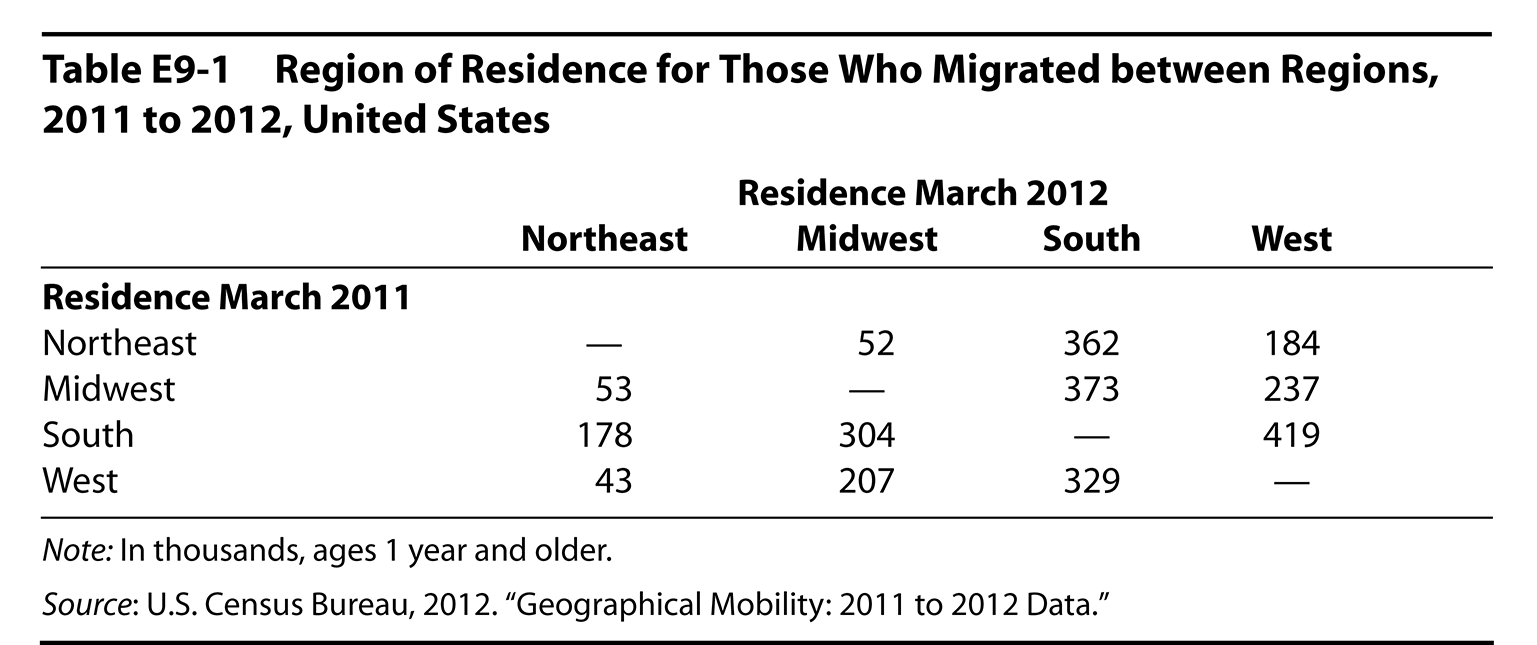
-
The migration stream from the Northeast to the South had 362,000 people. How many were in the migration stream from South to Northeast?
-
The volume of (gross) migration between the South and the Northeast was 540,000 people. What was the volume of migration between the Midwest and the South?
-
The net migration from the Northeast to the South was plus 184,000. What was the net migration from the South to the Northeast?
-
What was the net migration from the Midwest to the South?
-
Suppose you had the hypothetical interregional migration situation in Table E9-2.
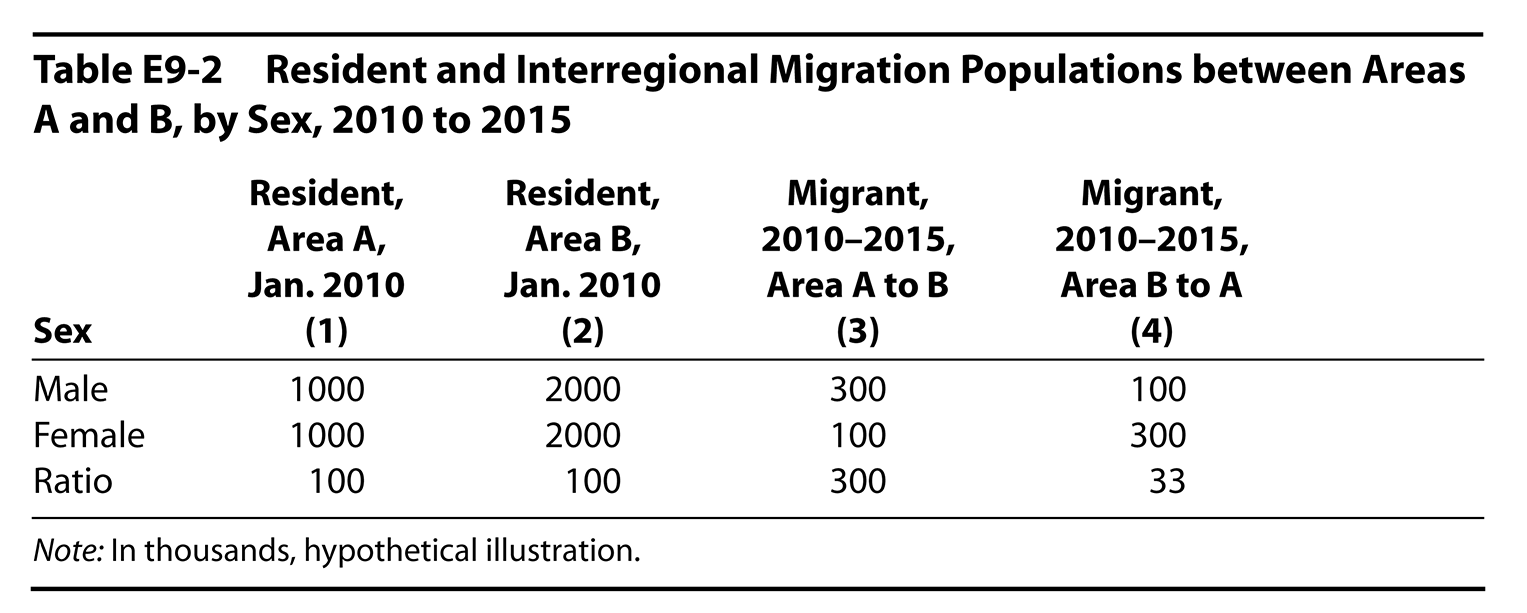
-
What would be the resulting net migration stream (in raw numbers) to Area B from Area A? (Specify plus or minus.)
of menof women minus 200
-
What would be the influence of this sex-selective net migration on the sex ratio of the new resident population of Area A? (Check one.)
raise itlower itno influence
-
The influence would be in the opposite direction in Area B, but would the degree of effect be more, or less, in Area B, given Area B’s larger initial resident population? (Check one.)
morelessthe same
-
Lacking direct counts of migration, nations often infer net migration between censuses by the vital statistics method. The appropriate formula is:
M = (P2 – P1) – (B – D)
You may recognize this as a transformation of the growth equation presented in chapter 1. Table E9-3 shows the required calculations of net migration for the United States from 2012 to 2013. Following that model, estimate the net migration for Mexico from 2012 to 2013. Enter your answers in the blank spaces in the table.
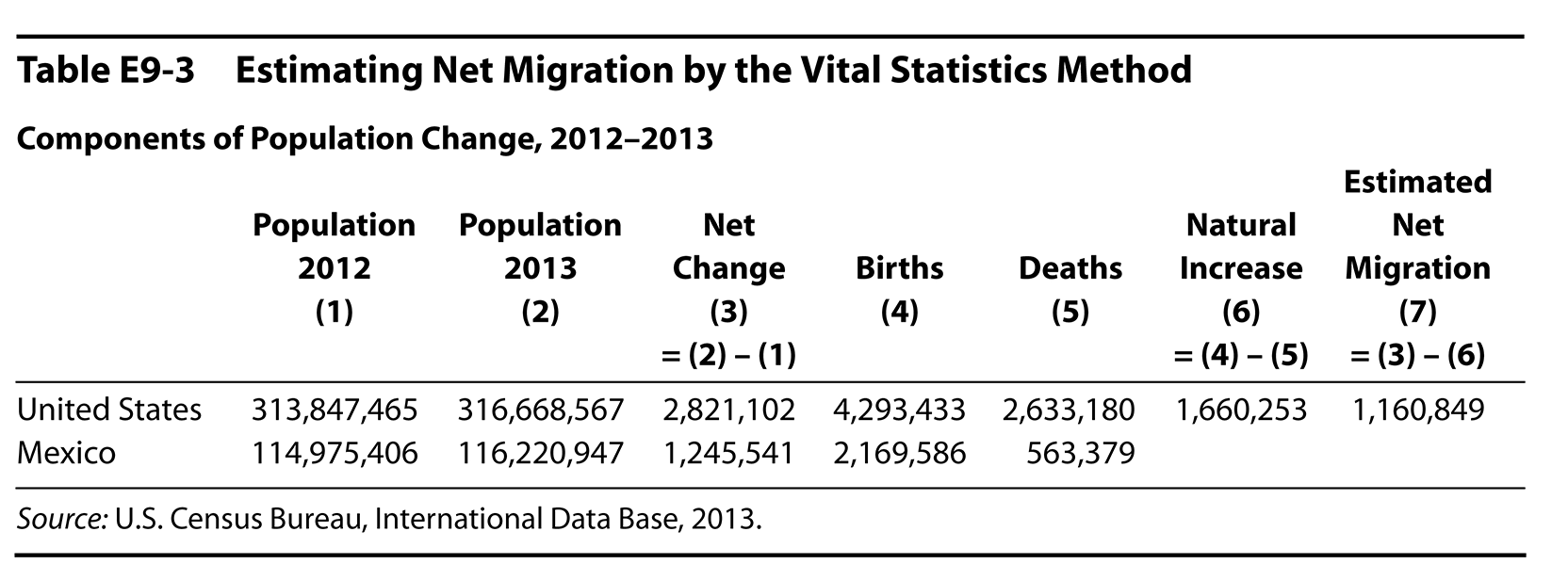
If these estimates are to be believed, which country had the higher crude rate of net migration, on the average, for the years 2012 to 2013? (Check one.)
MexicoU.S.
Charts
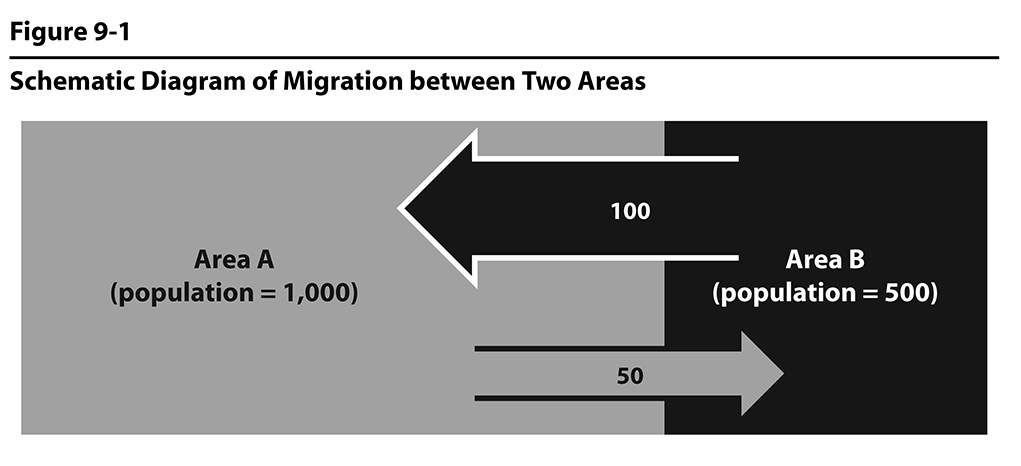
Figure 9.1
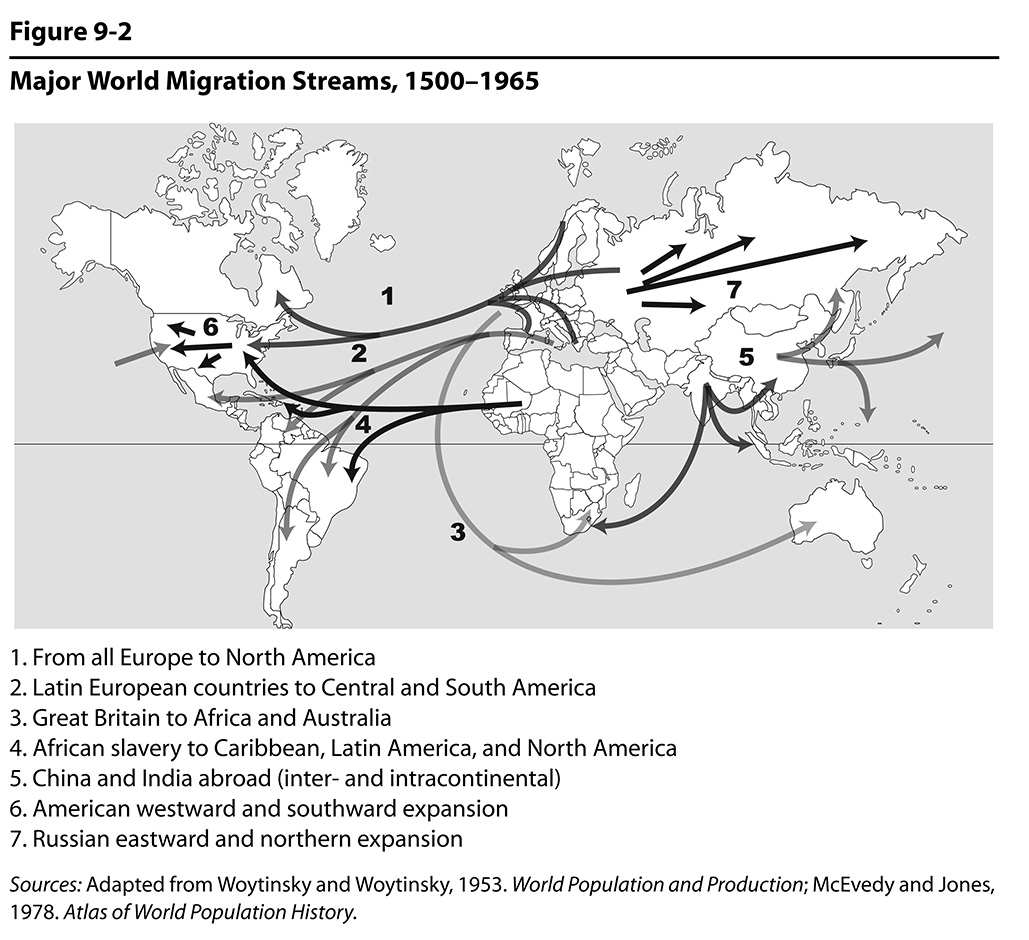
Figure 9.2
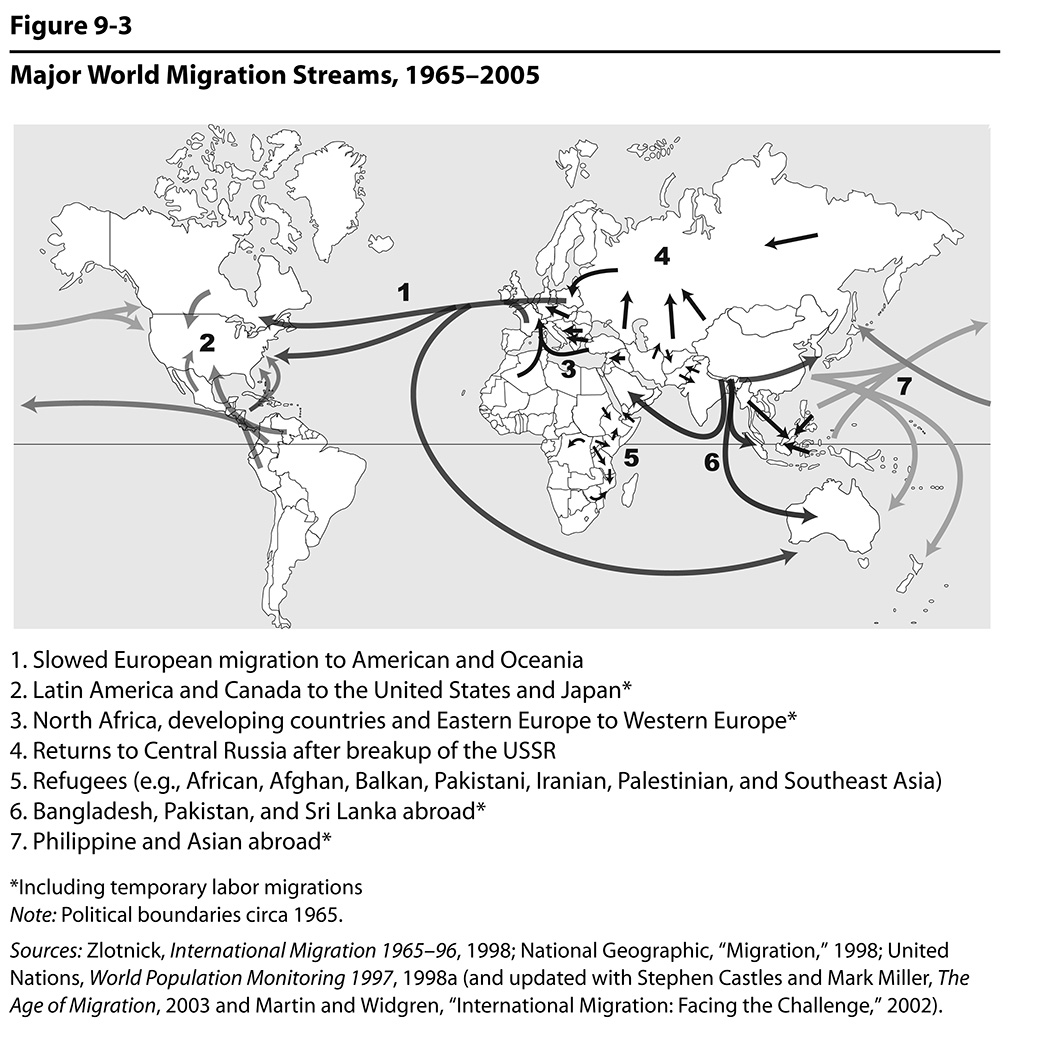
Figure 9.3
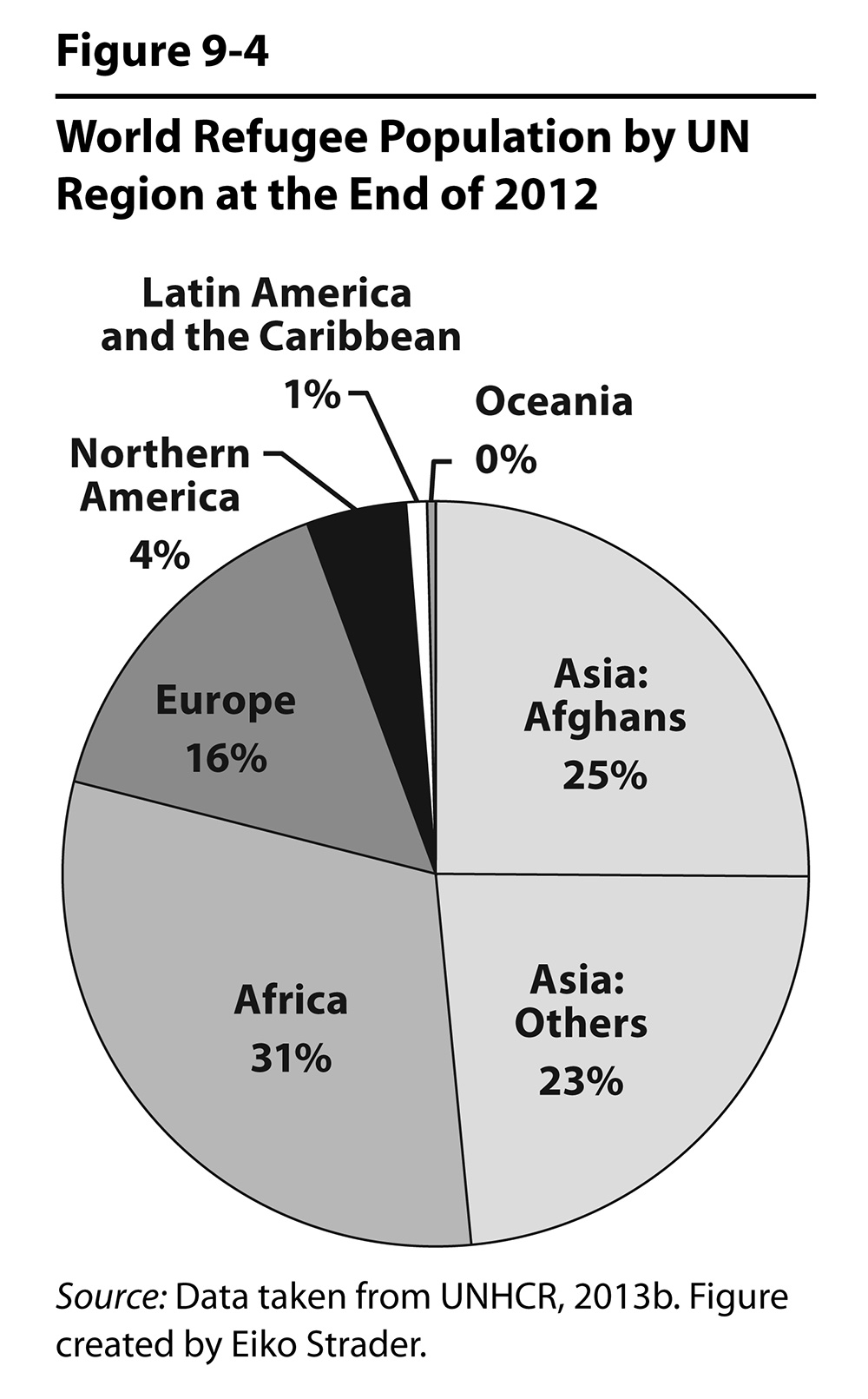
Figure 9.4
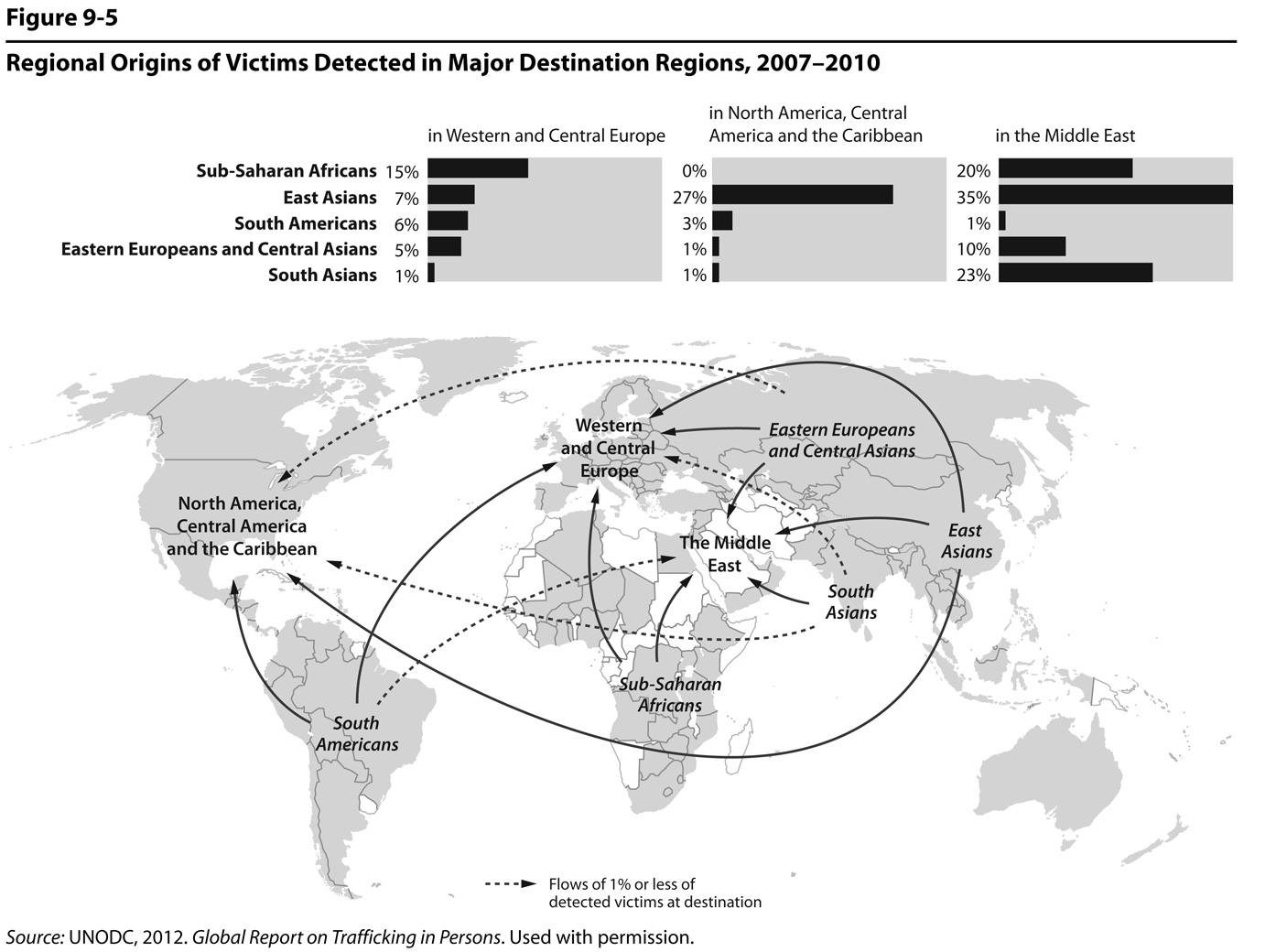
Figure 9.5
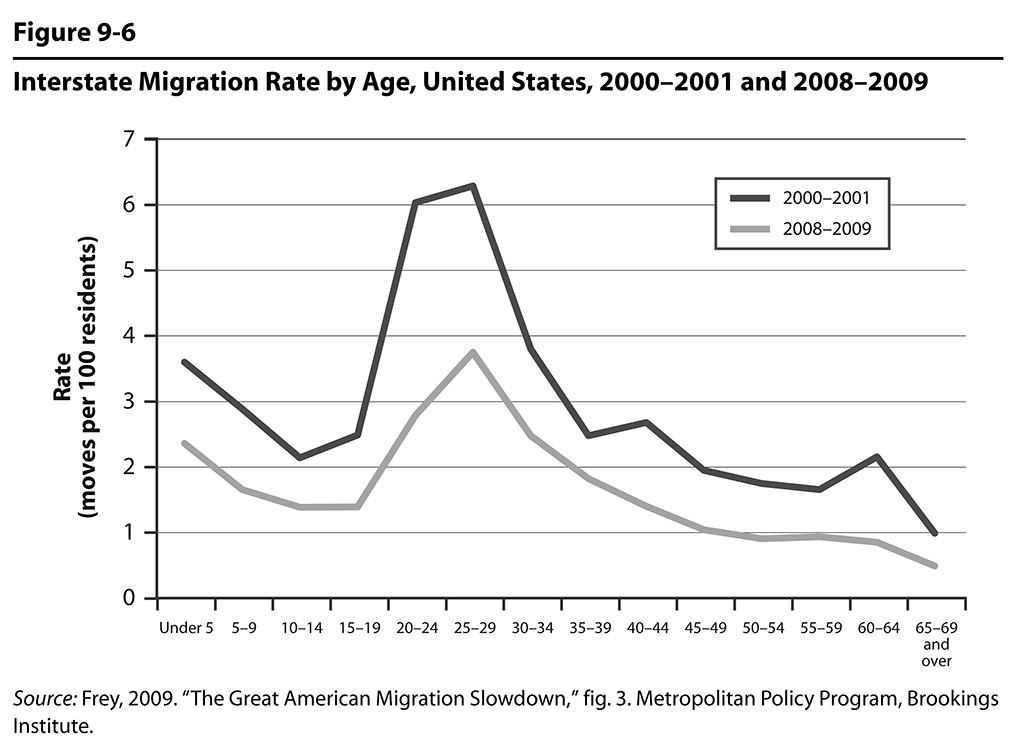
Figure 9.6
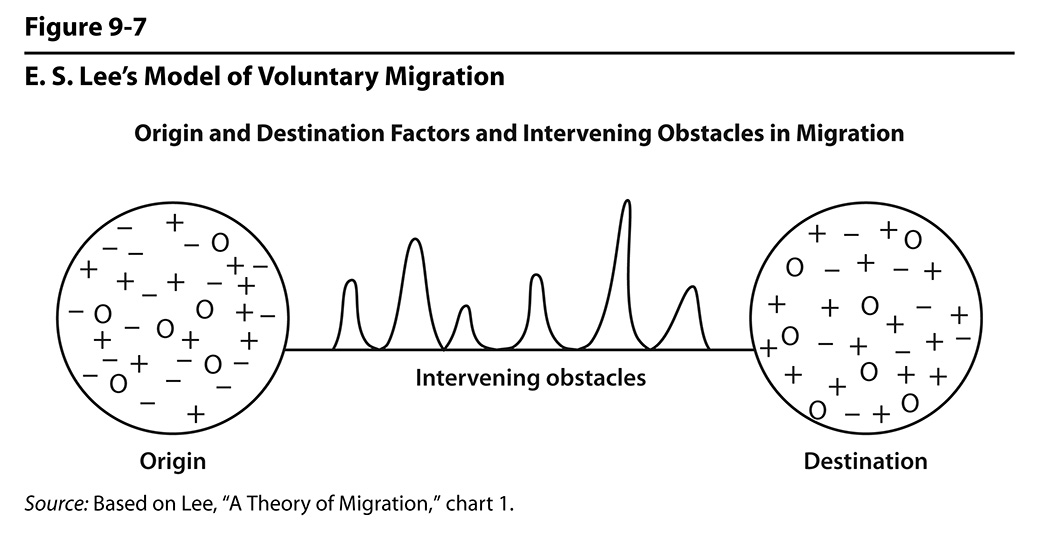
Figure 9.7
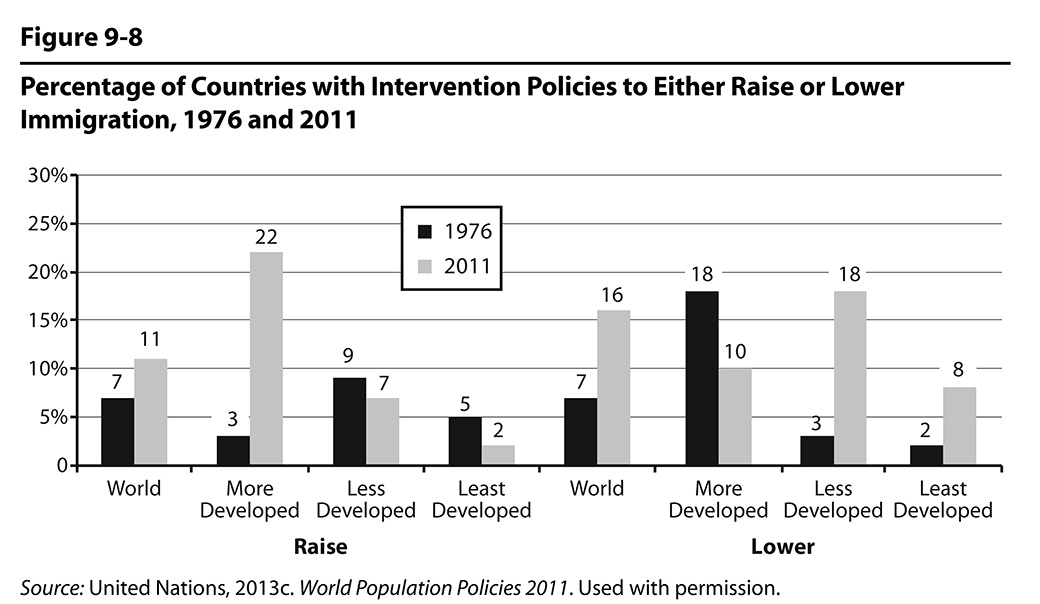
Figure 9.8
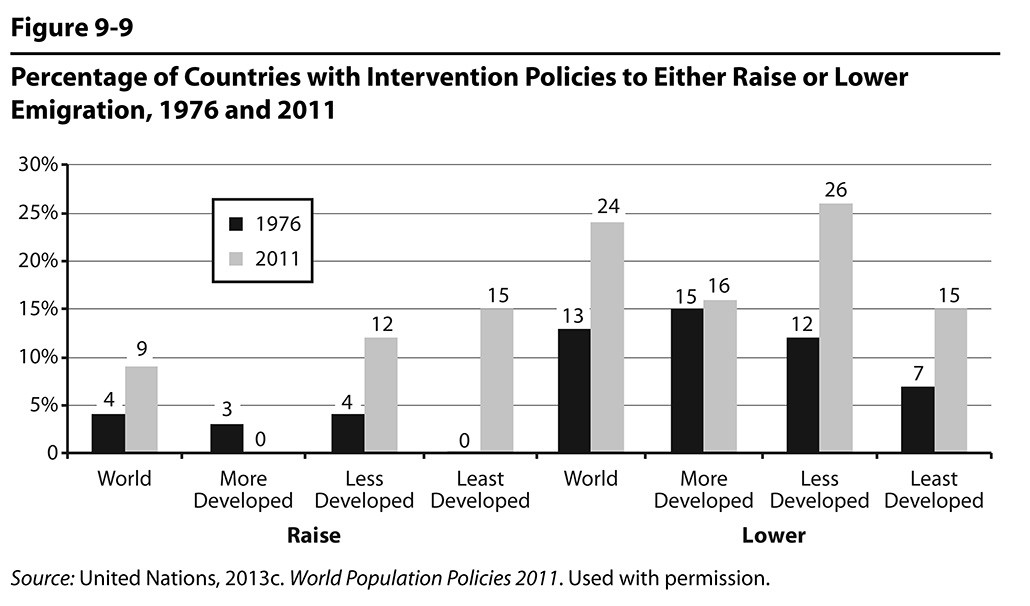
Figure 9.9
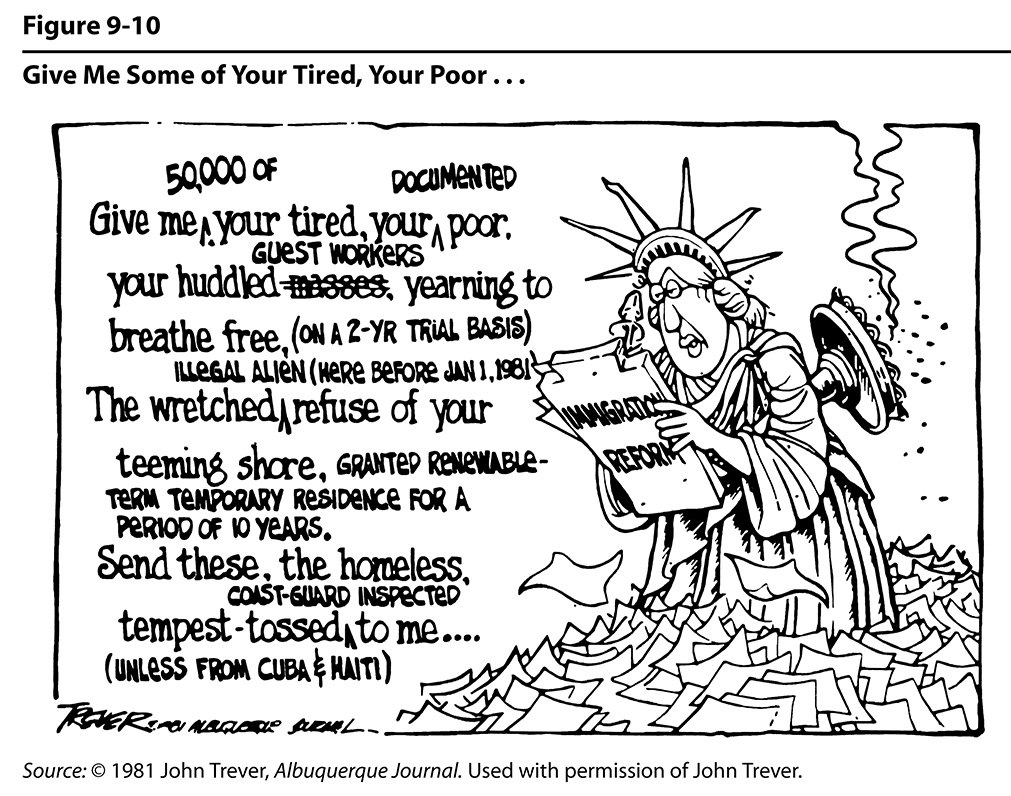
Figure 9.10
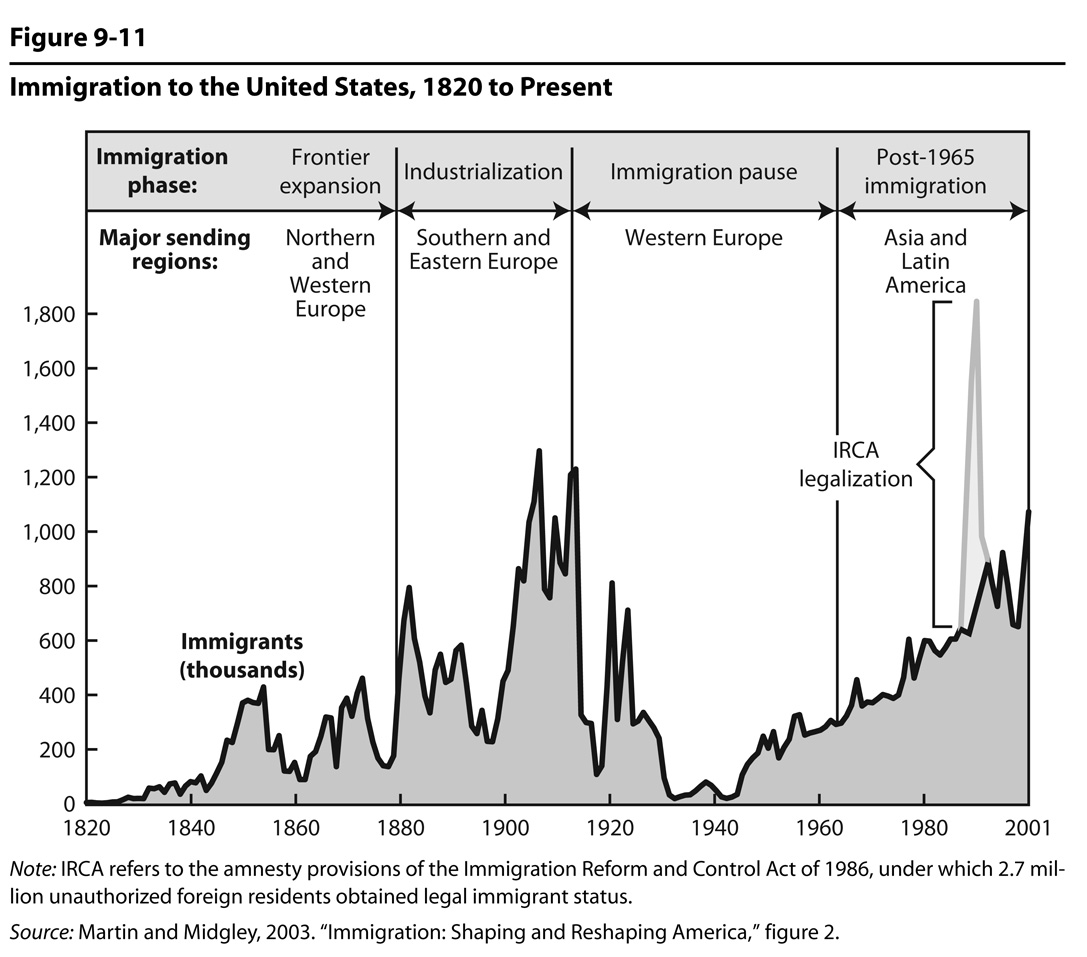
Figure 9.11